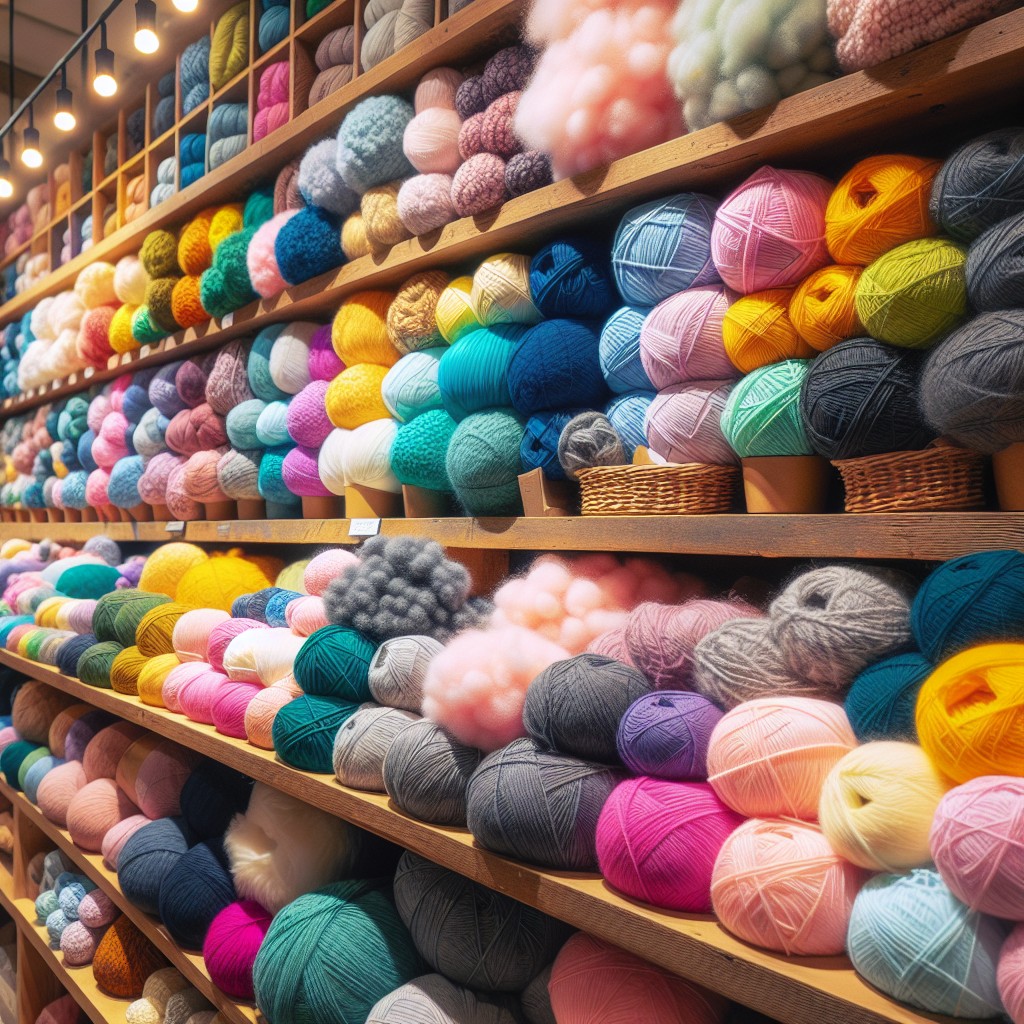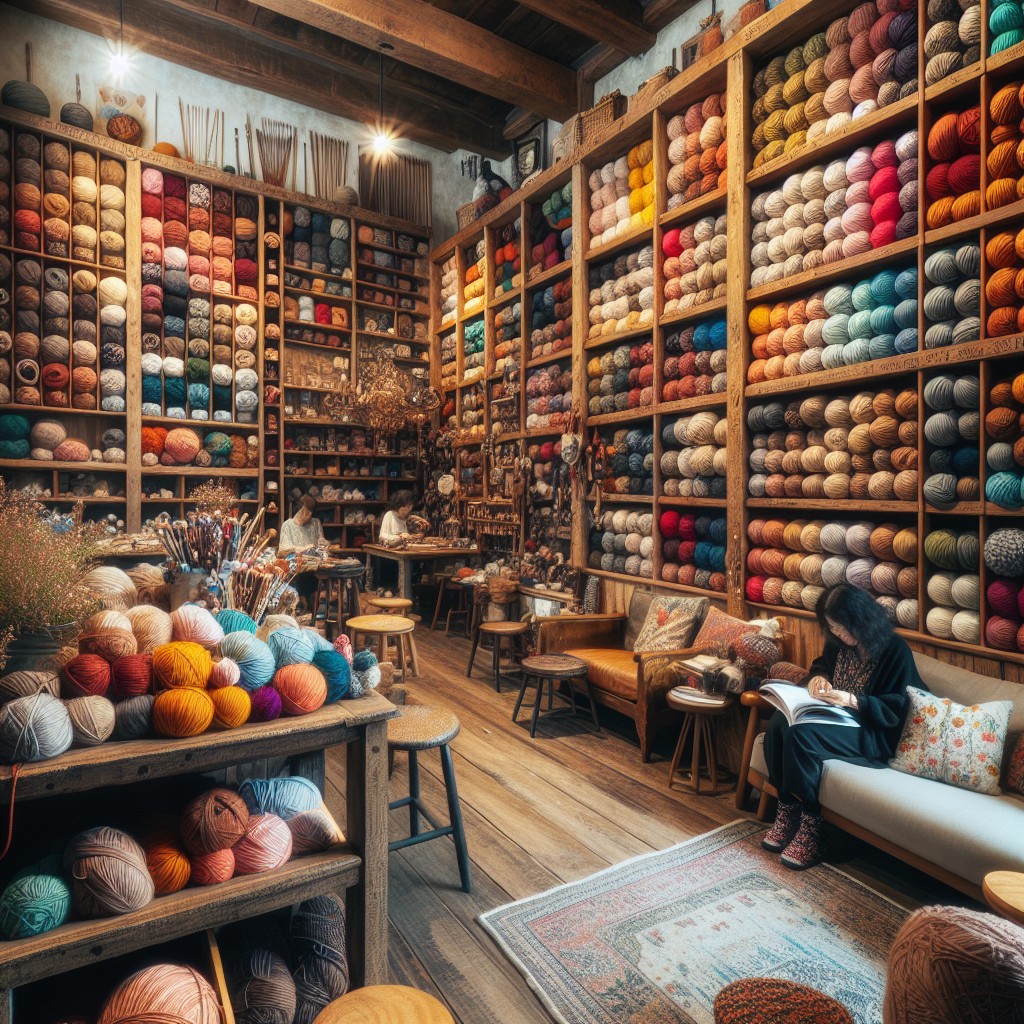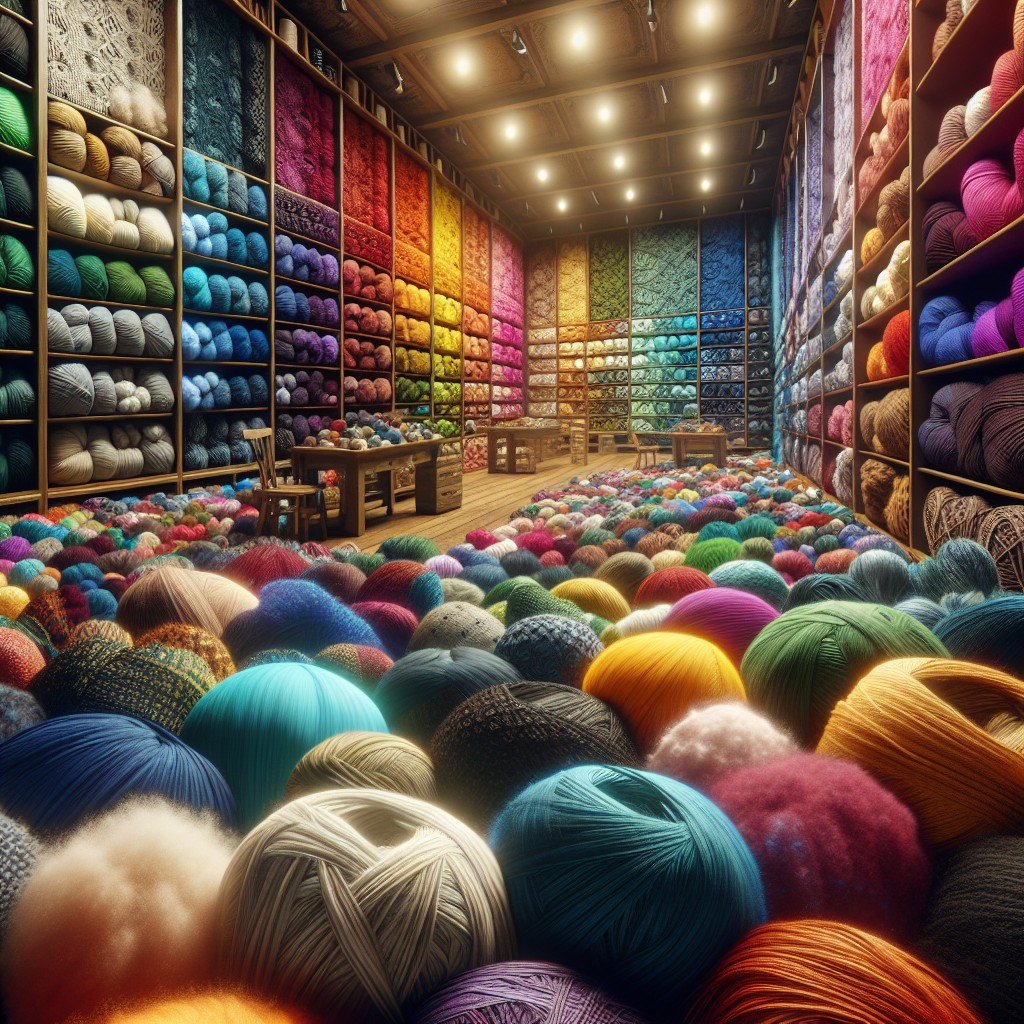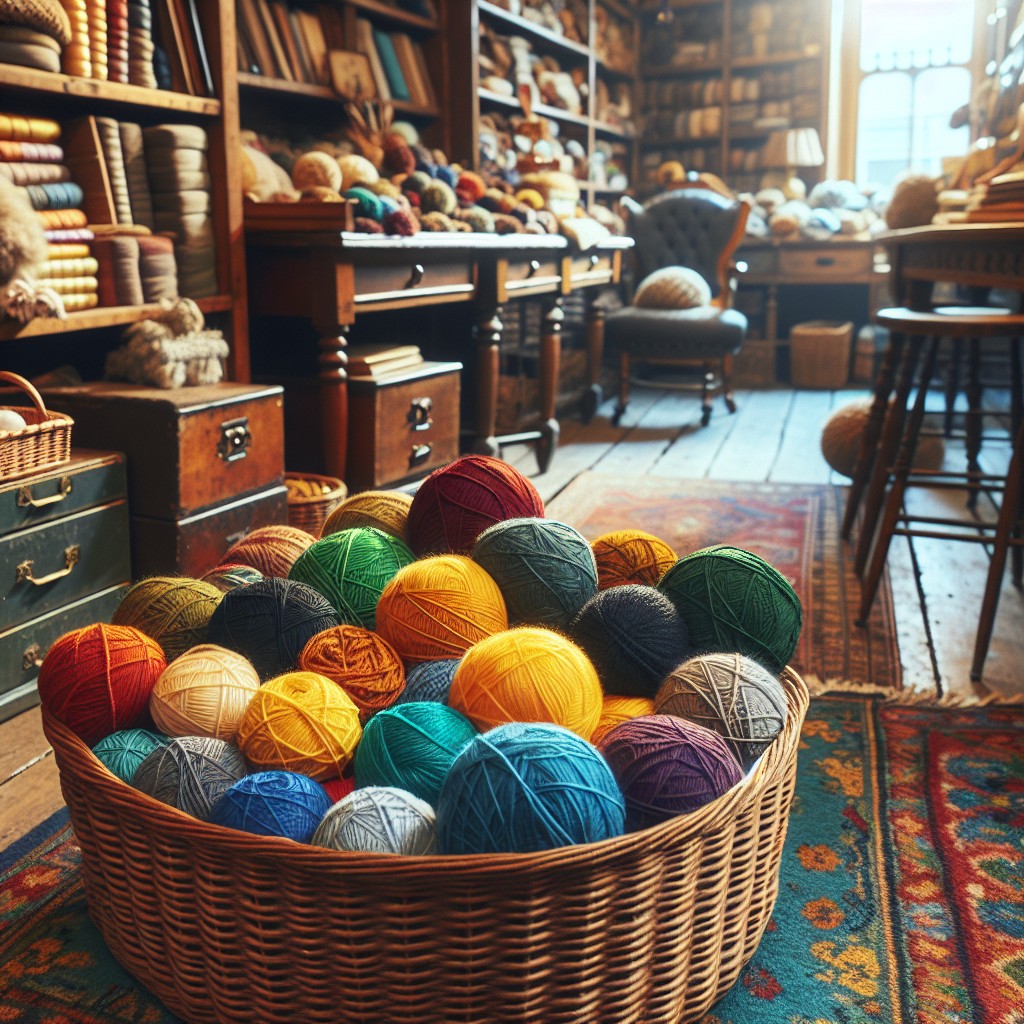Here’s where you can get yarn for your projects. We’ve compiled an awesome list to choose from
Key takeaways:
- Consider local yarn stores, online retailers, and thrift stores.
- Local yarn stores offer expertise, advice, and community.
- Online retailers provide convenience, variety, and customer reviews.
- Thrift stores offer unique finds at a lower cost.
- Understand yarn weights, types, and their suitability for different projects.
Sources for Acquiring Yarn

Local yarn stores often provide a wide array of quality yarns and the expertise of seasoned staff who can offer advice and recommendations. They are ideal for seeing and feeling the yarn before making a purchase, and for supporting small businesses in your community.
Online retailers offer the convenience of shopping from home, with a vast selection that local stores might not carry, often including reviews from fellow crafters that can inform your choice.
For those on a budget or looking for unique finds, secondhand and thrift stores can be treasure troves of discounted yarns. While the selection is less predictable, you might stumble upon high-quality or vintage yarns at a fraction of their original cost.
Local Yarn Stores

Local yarn stores offer a tactile shopping experience for crafters. These shops often provide a diverse array of high-quality fibers from both well-known brands and independent dyers.
Staff members are typically knowledgeable and can offer valuable advice on yarn selection, project planning, and troubleshooting crochet or knitting challenges.
Many stores also host workshops and knitting circles, fostering a community atmosphere that can inspire and motivate.
Supporting these businesses not only contributes to the local economy but also ensures that dedicated spaces for yarn enthusiasts remain available.
When visiting, remember to bring a sample or pattern to ensure you purchase the appropriate quantity and type of yarn for your project.
Online Yarn Retailers

Shopping with online yarn retailers brings convenience and variety right to your fingertips. You have the ability to explore an expansive array of yarn brands, fibers, and colors from around the world without leaving home. Here are some considerations when purchasing yarn online:
- Detailed Descriptions: Look for retailers that provide thorough explanations of the yarn, including fiber content, weight, and recommended needle size.
- Color Accuracy: Be aware that computer monitors may display colors differently. Read reviews to see if the actual yarn matches the online image.
- Sample Services: Some retailers offer yarn samples, allowing you to test the yarn before committing to a purchase.
- Shipping Policies: Check shipping costs and return policies. Some shops offer free shipping over a certain amount or easy returns if the yarn doesn’t meet your needs.
- Customer Reviews: Browse reviews to assess the quality of the yarn and the service provided by the retailer.
- Discounts and Loyalty Programs: Join newsletters or loyalty programs for access to exclusive sales and discounts.
- Community: Engage with the retailer’s online community, if available, to share insights and get inspiration from other crafters.
By considering these points, you can make informed decisions and find the best deals when buying yarn online.
Secondhand and Thrift Stores

Venturing into secondhand and thrift stores for yarn can be a treasure hunt, offering unique finds and budget-friendly options. Here are a few tips for successful thrifting:
1. Inspect Quality: Look for skeins free from damage, such as stains or moth holes, ensuring the yarn is in good condition.
2. Wash Before Use: Secondhand yarn may carry scents or dust, so it’s advisable to wash it if the care label allows.
3. Unlabeled Finds: If the skein lacks a label, you’ll need to determine the fiber content and weight by feel and appearance, or with a burn test for fiber content.
4. Quantity Check: Make sure to get enough yarn for your project, accounting for the fact that finding more of the same dye lot later will be challenging.
5. Be Open-Minded: Embrace the opportunity to try different yarn types or colors that you might not have considered when buying new.
By keeping these points in mind, you can expand your yarn collection resourcefully while also contributing to the recycling of materials.
Understanding Yarn Weights and Types
Selecting the proper yarn weight is crucial to ensure your project turns out as planned. Yarn is broadly categorized by its thickness, which directly influences the texture and the number of stitches per inch in your work.
Lace weight is one of the thinnest yarns available, perfect for delicate shawls and lightweight garments.
Worsted weight yarn is a versatile medium thickness, ideal for a range of projects from sweaters to blankets, and it’s one of the most commonly used.
Bulky yarn is thick and cozy, great for quick projects like winter hats or chunky scarves due to the larger stitches and heftier gauge.
When considering yarn types, pay attention to fiber content which affects the feel, stretch, and warmth of your finished item. Common fibers include wool for warmth and resilience, cotton for coolness and softness, acrylic for durability and ease of care, and blends that offer a combination of these qualities. Remember to take note of the yarn’s recommended gauge and needle size to match your pattern’s requirements and achieve the desired finish.
Lace
Delicate and fine, this category of yarn is ideal for creating elegant, lightweight garments and accessories. Here’s what you need to know:
- Generally, the thinnest of all yarns, it’s perfect for intricate stitch patterns that require a high level of detail such as lace shawls and doilies.
- Use smaller needles or hooks, size is typically 1.5-2.25 mm, to maintain the detailed stitch work associated with this yarn type.
- Patience is key as projects can take longer due to the fine yarn and complex patterns often involved.
- Pay attention to fiber content; silk and merino blends add durability and a subtle sheen, enhancing the finished look.
- When selecting a pattern, consider openwork designs to showcase the delicate nature of the yarn.
Worsted
Worsted yarn, often referred to as medium weight, is the go-to choice for many crafters due to its versatility. It strikes a comfortable balance between fine and chunky, making it suitable for a wide range of projects, from cozy sweaters to durable household goods.
Key points about worsted yarn include:
- Recommended Needle and Hook Size: Generally, knitting needles sized 7-9 (4.5-5.5 mm) and crochet hooks sized I-9 to K-10½ (5.5-6.5 mm) work best with this weight.
Gauge: Typically, the gauge for knitting is 16-20 stitches over 4 inches (10 cm), which helps predict the finished size of your work.
Stitch Definition: Thanks to its thickness, it provides excellent stitch definition, ideal for showcasing intricate patterns such as cables or lace.
Warmth and Durability: The denseness of this yarn contributes to the warmth of the finished project, making it an excellent choice for cold-weather attire or blankets.
When selecting worsted yarn, consider these traits to ensure your crafting project meets your desired outcome.
Bulky
When crafting with bulky yarn, projects tend to work up quickly due to its thick structure, making it ideal for cozy blankets, scarves, and hats.
It is typically classified as a weight 5 or 6, indicated on yarn labels.
When using bulky yarn, it’s important to use appropriate hook or needle sizes, often larger to accommodate the thickness and ensure proper stitch definition.
Keep in mind this yarn’s suitability for wearables in colder climates, as it provides substantial warmth.
Bulky yarn also offers a satisfying texture and can add a chunky, modern look to your handcrafted items.
However, due to its size, it may use more yardage than lighter weights, so plan your purchases accordingly.
Selecting Yarn for Different Projects
The success of a project often hinges on choosing the correct yarn, which encompasses gauge, color, fiber content, and care instructions.
Gauge influences the size of stitches and overall fabric structure; it’s vital to match the gauge specified in a pattern to ensure accurate sizing.
Colors must be selected not just for aesthetic appeal but also for their ability to hide or highlight stitch patterns.
Fiber content affects both the feel and the functionality of the finished item, with natural fibers offering breathability and synthetics providing durability.
Lastly, care instructions are crucial for the longevity of the piece, with some yarns requiring gentle hand washing while others can withstand machine washing and drying.
Each of these elements requires careful consideration to align with the intended purpose and desired outcome of the knitting or crocheting endeavor.
Gauge and Draping
Selecting the right yarn for your project is crucial, as it affects not only the appearance but also the functionality of the finished piece. Here are some key considerations:
1. Gauge: This refers to the number of stitches per inch a yarn can produce and directly correlates to the finished size of your project. Use the recommended needle or hook size to achieve the correct gauge, and always create a test swatch to ensure your gauge matches the pattern’s recommendations.
2. Draping: The drape of a fabric is how it hangs or falls when completed. Yarns with a soft and flexible nature, like silk or bamboo, tend to have a good drape and create flowing garments. Conversely, stiffer yarns may be ideal for structures like bags or baskets.
Remember, achieving the desired gauge and drape can make the difference between a project that fits beautifully and one that doesn’t quite meet your expectations. It’s worth taking the time to swatch and get to know the yarn’s behavior before diving into your project.
